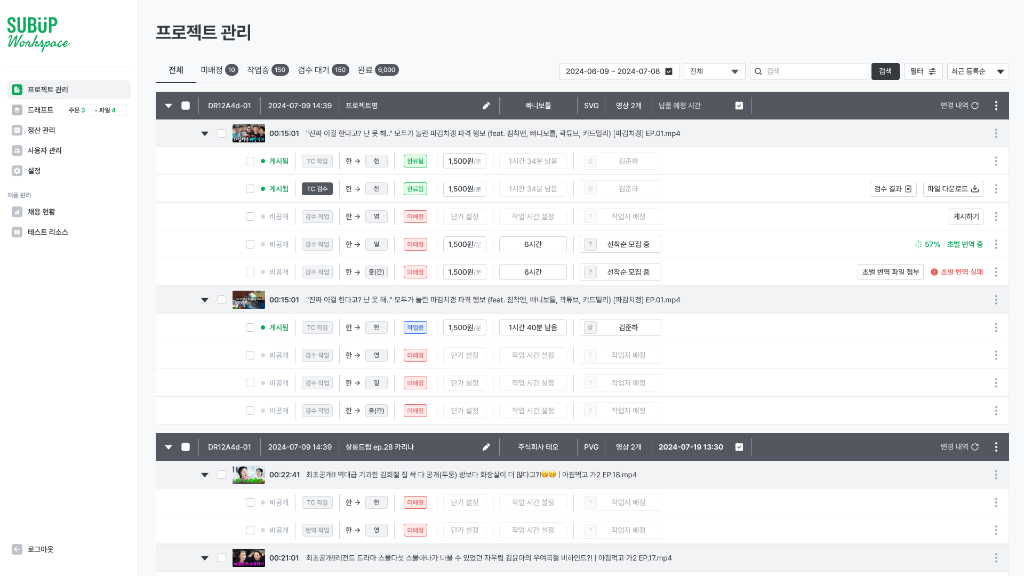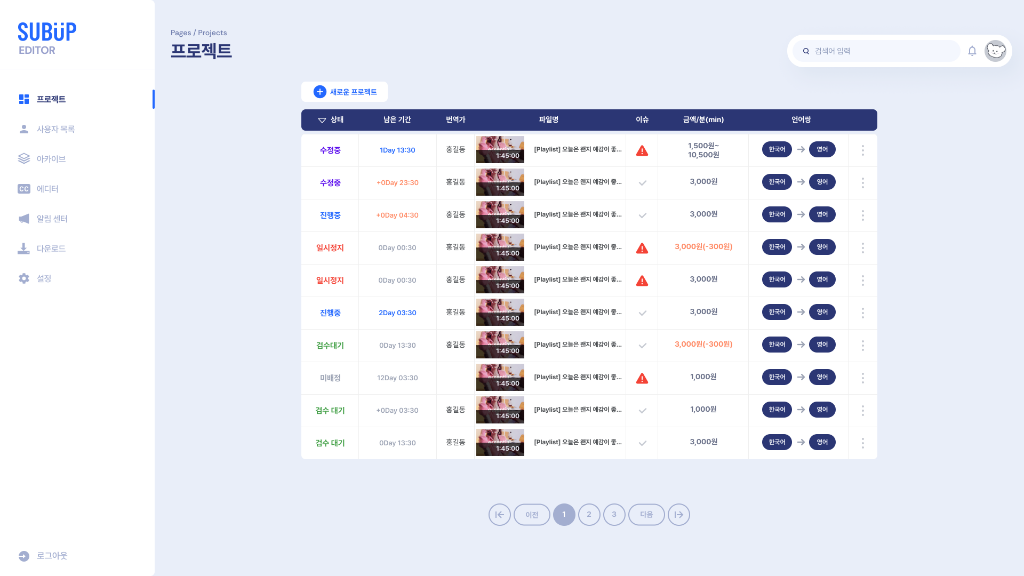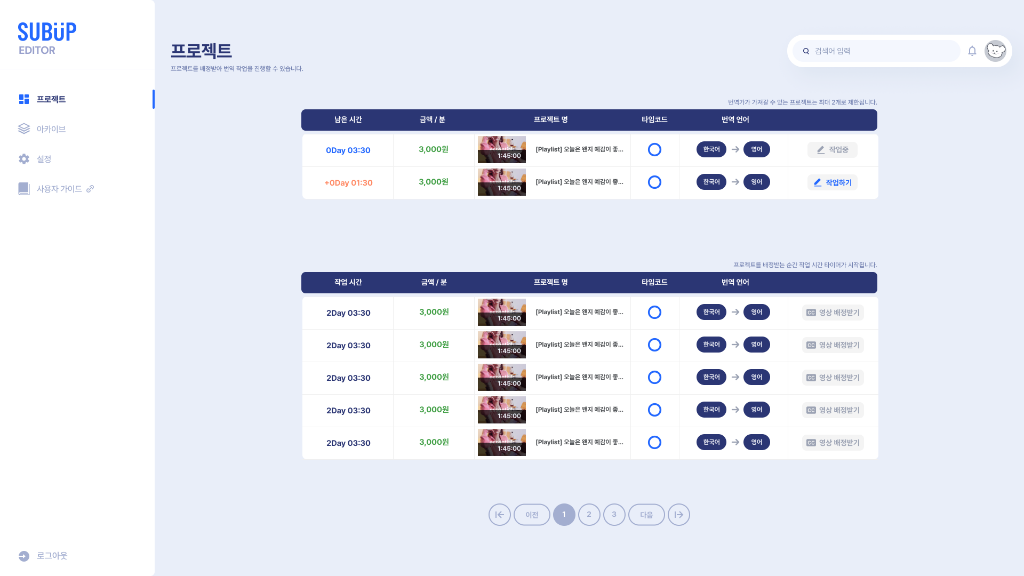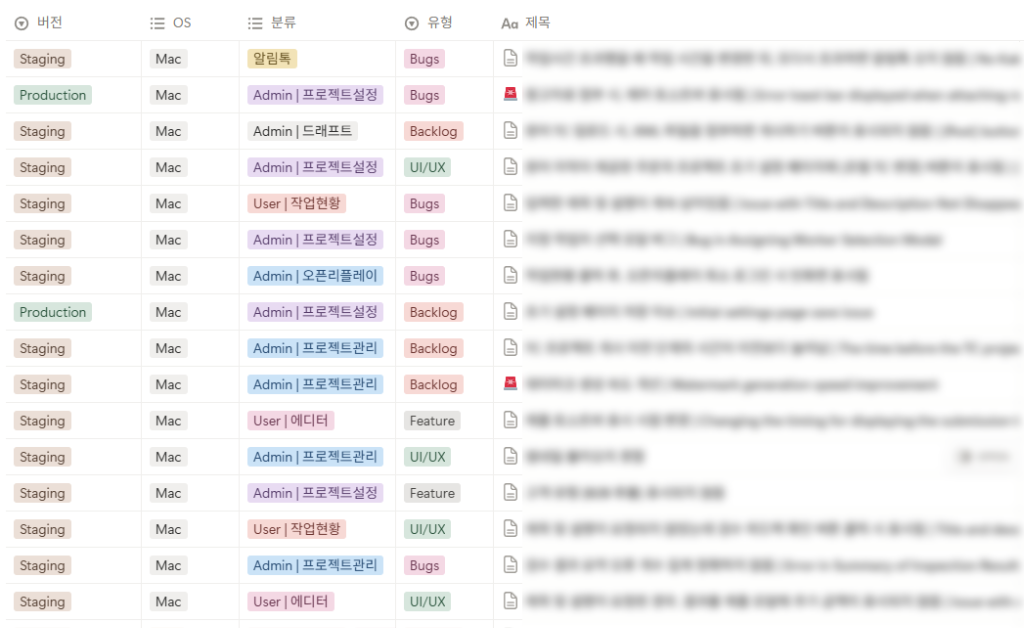SUBUP Workspace
Role
Product Design, UX Research
Team
PD 2, FE 1, BE 1
Timeline
2024–2025
Platform
Internal Web App
01 / OVERVIEW
THE
CONTEXT
SUBUP Workspace is an internal operations platform that consolidates the entire video translation workflow—from order intake to assignment, translation, and review—into a unified hub.
- Users: 6 operations team members and ~100 freelance translators.
- Key Change: Consolidated 3 fragmented tools (Google Sheets, Admin, Beta Workspace) into one, unifying operations, assignment, and status management.

Admin Hub: Consolidated view for Operations Team

Translator Workspace: Focused task execution for Freelancers
02 / CHALLENGE
PROBLEM &
CONSTRAINTS
The operations team juggled Google Sheets, SUBUP Admin, and Beta Workspace, leading to recurring issues:
- Duplicate Entry: Entering the same info across multiple systems.
- Communication Gaps: Missed handovers.
- State Inconsistencies: Systems falling out of sync.
For translators, the limitations were clear:
- Performance: Sharp degradation as volume increased.
- Rigidity: Could not accommodate new job types (review/QA).
- Cost: Real-time discrepancies caused expensive manual reconciliation.

Before: Admin Dashboard

Before: Translator Dashboard
Before: Fragmented Workflow
After: Unified Single Hub
03 / PROCESS
KEY
DECISIONS
Chose a full redesign over incremental patches to address root causes.
1. Research & Analysis
- Immersed in actual operations work to experience constraints firsthand.
- Mapped end-to-end processes across all channels to identify bottlenecks.
- Atomized feature requests into modular building blocks for redesign.
2. Collaboration & Decisions
- Goal: "Implement a single hub spanning the entire order lifecycle."
- Principle: "Free comments, required rationale." Communicated via Problem → Constraint → Alternative.
- Resolution: Resolved disagreements by adopting the most logically sound alternative.
3. Validation & Refinement
- QA revealed click costs, leading to improvements like list row hover/focus highlighting.
- Addressed flow chart gaps (overflows, edge cases) via backlog collaboration with developers.
Atomized Requirements
Grouped by Purpose
04 / OUTCOME
IMPACT &
RESULTS
Consolidated 3 tools into 2, completely eliminating Google Sheets.
- Solved Root Problems: Reduced duplicate entry, communication gaps, and state inconsistencies.
- Scalability: New job types absorbed as internal features without external tools.
- Usability: Reduced misclicks and improved processing speed via UI enhancements.
While quantitative metrics await launch, I established "order processing time" log collection for immediate data-driven evaluation. The priority goal—"end-to-end processing within Workspace"—has been met, with ongoing UX refinements tracked in the backlog.

Systematic QA & Backlog Management: Tracking improvements for continuous iteration